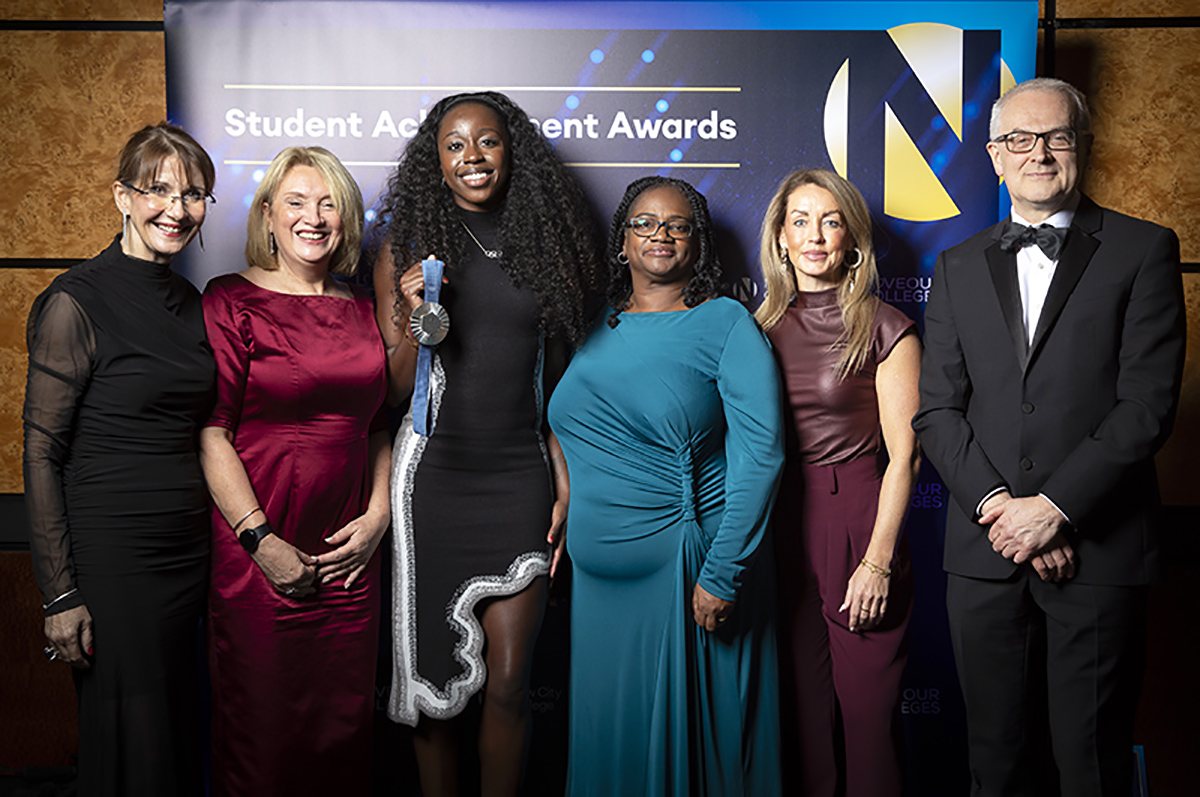Exploring Inclusive Math Education for Neurodiverse Youth

In this article, I will argue that inclusive math education can benefit neurodiverse youth by addressing their learning differences, improving their self-esteem and social skills, and enhancing their STEM career opportunities.
To support this argument, I will review the literature on inclusive math education, analyse the best practices and strategies, and provide examples of successful programs. Furthermore, I will discuss the broader implications of inclusive math education and how it can promote equity, diversity, and inclusion in STEM fields.
In recent years, there has been a growing recognition of the need for inclusive math education for neurodiverse youth. According to Jenson, R.J. et al. (2023), effective inclusion practices for neurodiverse children and adolescents in informal STEM learning are crucial for their academic and personal development.
Mathematics education plays a vital role in shaping the academic and cognitive development of all students, including neurodiverse youth. However, it is crucial to ensure that math education is inclusive and meets the diverse needs of students with conditions such as autism, dyslexia, and ADHD. Further to this we will delve into key questions surrounding math and neurodiverse youth and explore evidence-based strategies to enhance their mathematical learning experience.
. “Do not worry about your difficulties in mathematics. I can assure you mine are still greater.” – Albert Einstein
Question 1: How can math education be made more inclusive for neurodiverse youth?
Math education can be made more inclusive for neurodiverse youth by implementing various strategies. These may include differentiated instruction, multisensory approaches, clear and explicit instruction, assistive technology, and fostering collaboration and peer support (Johnson et al., 2020; Parette et al., 2017; Sinclair et al., 2019).
Question 2: What teaching strategies and accommodations are effective in supporting neurodiverse students’ mathematical learning?
Effective teaching strategies and accommodations for supporting neurodiverse students’ mathematical learning may include the use of visual representations, concrete manipulatives, explicit instruction, scaffolded learning, and providing extra time and flexible assessments (Koskela et al., 2018; Riccomini et al., 2017; Saldaña et al., 2016).
Question 3: How does neurodiversity impact mathematical cognition and problem-solving abilities?
Neurodiversity, encompassing conditions such as autism, dyslexia, and ADHD, can impact mathematical cognition and problem-solving abilities in various ways. While the impact differs across individuals, common patterns can be observed. For instance, individuals with autism may exhibit strengths in visual thinking and pattern recognition, while facing challenges in flexible thinking and generalization (Ropar et al., 2016). Working memory difficulties associated with ADHD can impact problem-solving and retention of mathematical procedures (Martinussen et al., 2005).
Question 4: What are the strengths and challenges neurodiverse youth may face in mathematics?
Neurodiverse youth may demonstrate both strengths and challenges in mathematics. For example, some neurodiverse individuals exhibit strengths such as attention to detail, the ability to see patterns or connections, and unconventional problem-solving approaches. However, they may face challenges in areas such as working memory, processing speed, organization, task initiation, or flexible thinking (Riccomini et al., 2017).
Question 5: How can educators support the mathematical learning of neurodiverse students?
Educators can support the mathematical learning of neurodiverse students by providing a supportive and inclusive classroom environment. This includes understanding individual needs, implementing appropriate accommodations, using multisensory teaching strategies, promoting self-regulation skills, and fostering a growth mindset (Sinclair et al., 2019; Tournaki et al., 2018).
Question 6: What role does assistive technology play in enhancing math education for neurodiverse youth?
Assistive technology can play a significant role in enhancing math education for neurodiverse youth. It provides personalized learning experiences, adaptive features, and assistive aids like text-to-speech or speech-to-text software. Assistive technology tools enable students to access and engage with math content in ways that suit their individual learning styles and needs (Hasselbring et al., 2017; Griffin et al., 2018).
Question 7: How can peer collaboration and cooperative learning benefit neurodiverse students in math education?
Peer collaboration and cooperative learning can benefit neurodiverse students in math education in several ways. Collaborative activities promote social interaction, communication, and teamwork, which can enhance problem-solving skills and mathematical understanding. Neurodiverse students can learn from their peers, gain different perspectives, and develop important social and emotional skills (Bennett et al., 2017; Yelland et al., 2020).
Question 8: Are there any specific strategies for supporting students with dyspraxia and dyslexia in mathematics?
When supporting students with dyspraxia and dyslexia in mathematics, it is important to consider their unique challenges with reading and language processing. Some effective strategies include providing visual representations of mathematical concepts, using explicit and systematic instruction, incorporating multisensory approaches, and emphasizing the understanding of mathematical reasoning rather than relying heavily on written instructions or word problems (Barbaresi et al., 2020; Price et al., 2016).
Different learning styles: Neurodiverse youth have diverse learning styles, and educators should adopt a variety of instructional strategies to accommodate their needs. Visual aids, hands-on activities, and multisensory approaches can be effective in facilitating mathematical understanding for neurodiverse students.
Individualized instruction: Providing individualized instruction and tailored support is crucial for neurodiverse students in math education. This may involve personalized learning plans, targeted interventions, and accommodations such as extended time, assistive technology, or modified assignments.
Building foundational skills: It’s important to ensure that neurodiverse students have a strong foundation in foundational math skills. Focusing on numeracy, number sense, and basic arithmetic concepts can help set them up for success in more complex mathematical concepts.
Assistive technology: Utilizing assistive technology tools can greatly benefit neurodiverse students in math education. Software programs, apps, and devices can provide visual supports, interactive activities, and alternative means of expression to enhance learning and comprehension.
Emphasizing problem-solving and critical thinking: Encouraging neurodiverse students to engage in problem-solving activities and critical thinking exercises can foster their mathematical reasoning skills. Providing real-world contexts and open-ended problems can make math more meaningful and relatable for them.
Creating a supportive classroom environment: Establishing a positive and inclusive classroom environment is essential for neurodiverse students’ math learning. This includes promoting a growth mindset, fostering peer collaboration, and addressing math anxiety through supportive strategies and stress-reducing techniques.
Executive functioning support: Supporting the development of executive functioning skills, such as organization, time management, and task prioritization, can enhance the mathematical learning experience for neurodiverse youth.
Collaboration with parents and professionals: Collaborating with parents, caregivers, and professionals (such as special education teachers, therapists, or psychologists) can provide valuable insights and resources to support the math education of neurodiverse students.
Question 9: How can math anxiety be addressed in neurodiverse students?
Math anxiety can be particularly challenging for neurodiverse students, impacting their confidence and performance in mathematics. To address math anxiety, educators can create a supportive and low-stress learning environment, implement relaxation techniques, encourage positive self-talk, provide ample practice opportunities, and use engaging and relevant math activities (Dowker et al., 2016; Maloney et al., 2015).
Question 10: What role does executive functioning play in mathematical learning for neurodiverse youth?
Executive functioning skills, including working memory, attention, planning, and self-regulation, play a crucial role in mathematical learning for neurodiverse youth. Difficulties in executive functioning can impact various aspects of math performance, such as problem-solving, organization, time management, and task completion. Strategies that support the development of executive functioning skills can greatly benefit neurodiverse students in their mathematical learning journey (Holmes et al., 2014; Mammarella et al., 2019).
“Research studies have highlighted the importance of creating inclusive math education environments for neurodiverse youth (Johnson et al., 2020; Parette et al., 2017; Sinclair et al., 2019).”
“Effective teaching strategies for neurodiverse students’ mathematical learning include the use of visual representations, concrete manipulatives, and explicit instruction (Koskela et al., 2018; Riccomini et al., 2017; Saldaña et al., 2016).”
“Neurodiversity can impact mathematical cognition and problem-solving abilities in various ways, with individuals demonstrating strengths in areas such as visual thinking and pattern recognition, while facing challenges in flexible thinking and generalization (Ropar et al., 2016).”
“Neurodiverse students may exhibit strengths such as attention to detail, pattern recognition, and unconventional problem-solving approaches, but may also face challenges in areas such as working memory, processing speed, and flexible thinking (Riccomini et al., 2017).” undefined
Conclusion
Creating an inclusive math education environment for neurodiverse youth is essential for their success and enjoyment in mathematics. By implementing evidence-based strategies, accommodations, and fostering a supportive classroom environment, educators can meet the diverse learning needs of neurodiverse students and promote their mathematical achievement. It is crucial to understand the specific strengths and challenges associated with neurodiversity and tailor instruction accordingly to ensure equitable access to mathematical learning opportunities. “Life is a math equation. In order to gain the most, you have to know how to convert negatives into positives.” – Anonymous

FE News on the go…
Welcome to FE News on the go, the podcast that delivers exclusive articles from the world of further education straight to your ears.
We are experimenting with Artificial Intelligence to make our exclusive articles even more accessible while also automating the process for our team of project managers.
In each episode, our thought leaders and sector influencers will delve into the most pressing issues facing the FE sector, offering their insights and analysis on the latest news, trends, and developments.











Responses